The 1980s were a transformative decade for the automotive industry. As America recovered from the oil crises of the 1970s and embraced a new era of excess and flash, carmakers faced the challenging task of creating compact, fuel-efficient vehicles that could still capture the decade’s bold spirit. The result? A parade of compact cars desperately trying to convince buyers they weren’t sacrificing style or status by downsizing. Some became legitimate icons, but others… well, let’s just say their attempts at coolness have aged about as well as a mullet haircut and parachute pants. Here’s our nostalgic look back at ten times compact cars of the ’80s tried—and spectacularly failed—to be cool.
1. Chevrolet Chevette “Scooter”

When your car’s selling point is that it’s the cheapest new car in America, perhaps trying to market it as anything else is a losing battle. Yet Chevrolet persisted with the humble Chevette, introducing the “Scooter” package that was essentially a stripped-down version of an already bare-bones vehicle. Chevy’s marketing department somehow thought removing the back seat, carpeting, radio, and even the passenger-side sun visor would transform this econo-box into something youthful and desirable—as if driving the automotive equivalent of a empty apartment was the height of early ’80s cool. MotorTrend explores another way of viewing this car as underappreciated and worthy of a second look.
The Chevette Scooter’s attempt at sportiness was limited to some tape stripes and the vague suggestion that having less stuff somehow made it more fun to drive. With a 0-60 time measurable with a sundial (around 18 seconds) and an engine that wheezed louder than your grandfather after climbing stairs, the Scooter offered all the excitement of a dial tone. Despite Chevy’s insistence that young drivers would embrace this minimalist approach, most buyers weren’t fooled—they recognized that “Scooter” was code for “we’ve removed everything that might make this tolerable” and opted for used cars with functioning rear seats and the revolutionary luxury of matching interior door panels.
2. Ford EXP
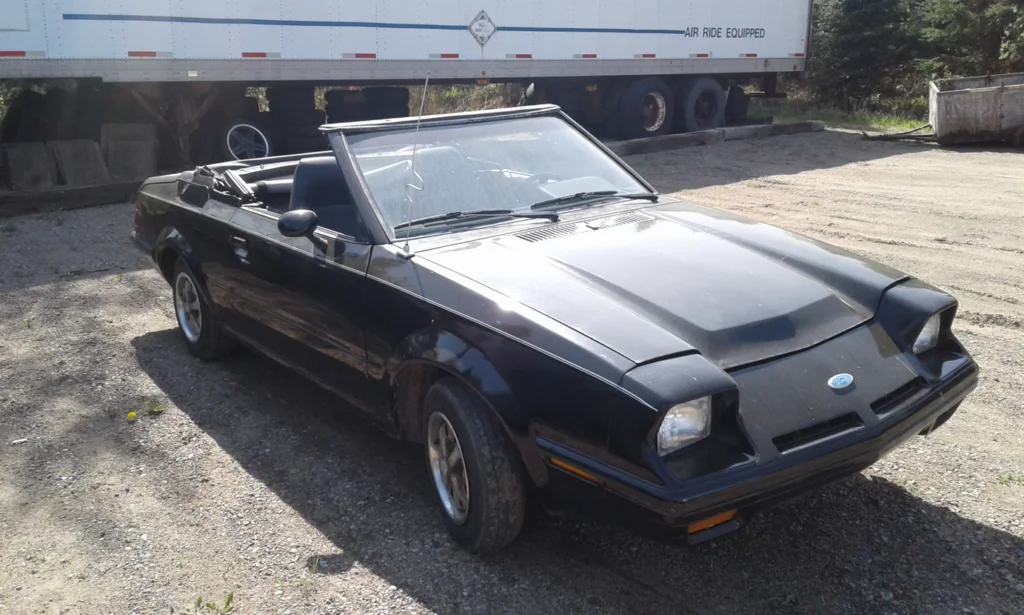
Someone at Ford had a genuinely interesting idea: take the practical Ford Escort, give it a sleek two-seat sports coupe body, and create an affordable alternative to imported sports cars. On paper, the EXP (pronounced letter by letter, not “exp”) should have worked—it had distinctive styling with flush headlights, a futuristic digital dashboard on higher trims, and marketing that positioned it as a personal luxury sports coupe for the young urban professional. Unfortunately, Ford forgot one critical ingredient in this recipe: actual sportiness. SlashGear considers this a hidden treasure in Ford’s lineup.
Despite its aggressive wedge shape and promises of excitement, the EXP delivered a paltry 70 horsepower from its 1.6-liter engine, making its sporting pretensions more theoretical than actual. Ford’s marketers tried everything—sleek photography, Miami Vice-inspired color schemes, and ads featuring fashionable young people who apparently had very low standards for automotive thrills. The final insult came when Ford added a “luxury” trim level to a car whose entire existence supposedly celebrated youthful sportiness, creating the confusing EXP Luxury Coupe—a vehicle that delivered neither luxury nor coupe-like performance. By 1988, Ford mercifully pulled the plug, leaving behind a legacy of unfulfilled promises and confused automotive historians trying to explain how a car could so completely misunderstand its own reason for existence.
3. Pontiac T1000
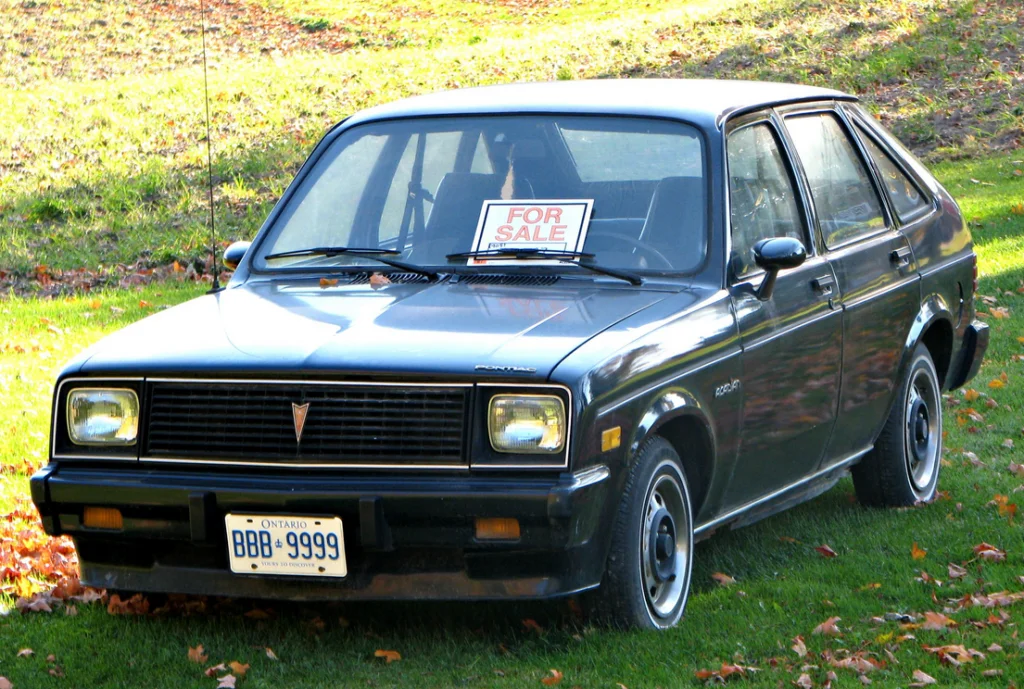
General Motors’ badge engineering reached peak absurdity with the Pontiac T1000, which was quite literally a Chevrolet Chevette with Pontiac badges and a slightly different grille. Apparently, GM believed that consumers who wouldn’t be caught dead in a Chevette would somehow flock to the same car if it wore Pontiac’s arrowhead emblem. To inject some excitement into this rebadged economy car, Pontiac’s marketing department went into overdrive, featuring the T1000 in flashy ads with synthesizer soundtracks and neon lighting that suggested this humble hatchback was somehow part of Pontiac’s “We Build Excitement” lineup. Autoweek determinedly defends this car as a treasure.
The most hilarious attempt at coolness came when Pontiac decided to offer “rally” packages and sport appearance options for the T1000—essentially tape stripes, color-keyed mirrors, and handling packages for a car whose handling was best described as “terrifying when encountering a gentle breeze.” The sporty trim options created the automotive equivalent of putting Air Jordans on a sloth—they signaled athletic intentions that the vehicle had absolutely no hope of delivering. Consumers weren’t fooled, and the T1000 became a rolling punchline that even Pontiac salespeople struggled to promote with a straight face, finally disappearing after the 1987 model year when even GM couldn’t pretend anymore.
4. Renault Alliance “GTA”

The Renault Alliance was already struggling with an identity crisis as a French design built in Wisconsin by AMC, but things reached peak confusion when Renault decided to create a “performance” version called the GTA. In a decade obsessed with European sports sedans, Renault thought that adding a body kit, alloy wheels, and sport seats would transform their economy car into a legitimate competitor to the BMW 3-Series or Volkswagen GTI. Their marketing materials boldly proclaimed the Alliance GTA to be “America’s European sports car,” hoping consumers wouldn’t notice the inherent contradiction in that statement.
Despite magazine ads showing the GTA carving through mountain roads and a 2.0-liter engine that bumped horsepower to a still-modest 95, the car’s French-American hybrid nature resulted in reliability issues that undermined any sporting credentials it might have established. Renault’s television commercials featured the GTA driving aggressively while an announcer with a French accent touted its European engineering—seemingly unaware that by 1987, most Americans associated French cars with mechanical heartbreak rather than performance. The GTA disappeared along with the entire Renault brand in the American market shortly thereafter, leaving behind confused owners who discovered that having “GT” in your car’s name doesn’t automatically make it a grand tourer.
5. Dodge Omni “GLH”
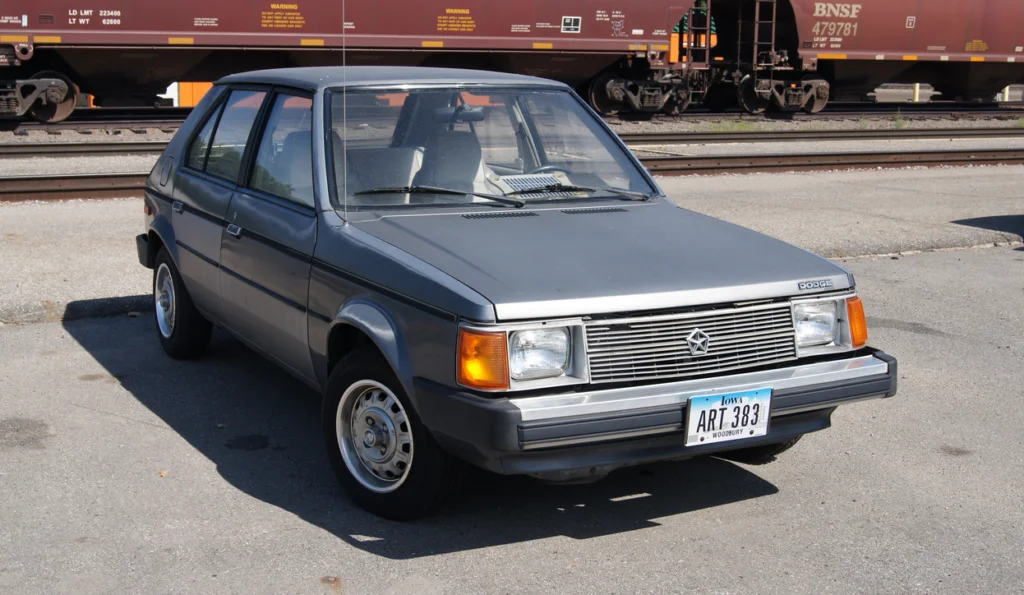
In a rare case where the performance actually outshined the marketing, the Dodge Omni GLH (which famously stood for “Goes Like Hell”) was legitimately quick for its time. Developed with input from Carroll Shelby, the turbocharged version could outrun many sports cars of the era. So why is it on this list? Because despite having actual performance credentials, Chrysler’s attempt to make this boxy economy car look cool resulted in one of the decade’s most awkward styling exercises.
The Omni’s fundamentally dorky hatchback shape remained untouched, with Chrysler simply adding ground effects, blacked-out trim, and decals in a desperate attempt to disguise the car’s economy-focused origins. Marketing materials showed the GLH power-sliding through corners and featured young men with feathered hair looking admiringly at a car that still resembled something your economics professor would drive. The disconnect between the GLH’s genuinely impressive performance and its stubbornly unglamorous appearance made it the automotive equivalent of a math prodigy trying to fit in at the cool kids’ table by wearing a leather jacket. While it eventually gained cult status among those who appreciated its sleeper performance, the general public never embraced the idea that a turbocharged economy box with all the visual appeal of a toaster could be considered cool.
6. Yugo GV
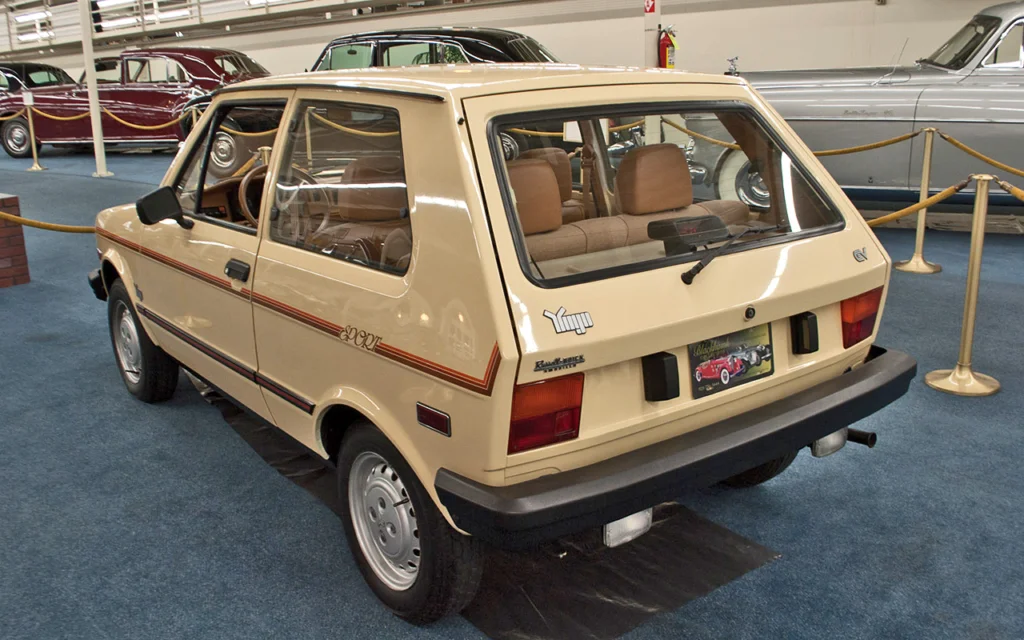
Sometimes a car is so uncool that it circles all the way around to becoming ironically cool, only to continue the circle and end up back at hopelessly uncool again. The Yugo GV (Great Value) inhabits this strange space in automotive history. Imported from Yugoslavia and priced at just $3,990 when it debuted in 1985, the Yugo was marketed with a campaign that tried to turn its budget nature into a virtue, suggesting that buyers who chose this Eastern Bloc import were making a clever, counter-cultural choice rather than simply purchasing the cheapest new car available.
The Yugo’s marketing team attempted to position its primitive technology and bare-bones equipment as charming simplicity—”back to basics” transportation for those too sophisticated for Japanese reliability or American comfort. Television commercials featured young, seemingly hip people delighting in the Yugo’s affordability, as if driving a car that felt like it was assembled by people who had only seen cars in magazines was some kind of anti-materialist statement. Consumer Reports famously noted that the car “came equipped with a rear-window defroster to keep your hands warm while pushing it.” The Yugo’s attempt at coolness through deliberate minimalism failed so spectacularly that it became a punchline for decades, proving that there’s a reason most “cool” cars don’t require passengers to help push them up hills.
7. Subaru XT
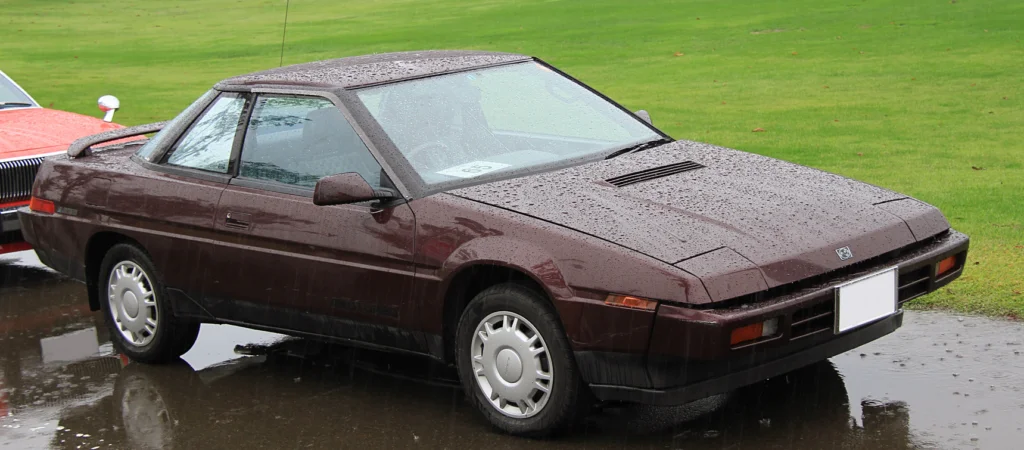
If looking like a vehicle from a low-budget science fiction movie was the goal, the Subaru XT succeeded admirably. This wedge-shaped oddity represented Subaru’s attempt to create a futuristic sports coupe that would capture the imagination of forward-thinking consumers. With its flat-four engine, available four-wheel drive, and an interior that appeared designed by someone whose primary reference for “high-tech” was watching “Knight Rider” marathons, the XT certainly wasn’t boring. Subaru’s marketing leaned heavily into the car’s quirky nature, with advertisements emphasizing its digital dashboard, joystick-like gear selector, and steering wheel that looked like a Nintendo controller.
Despite its genuine technological innovations and respectable performance, the XT’s styling was simply too weird for mainstream success. Subaru’s attempt to position it as futuristic and cool came across as trying too hard—like the kid who shows up to school wearing a calculator watch and a bow tie, convinced they’re the epitome of sophistication. The asymmetrical steering wheel and aircraft-inspired cockpit that Subaru thought would appeal to tech-savvy buyers instead created an overwhelming impression that you were driving the automotive equivalent of a failed prototype from a 1985 consumer electronics show. Though it has gained a cult following in recent years for its sheer audacity, in the 1980s, the XT proved that being different isn’t automatically the same as being cool.
8. Hyundai Excel

When Hyundai entered the U.S. market in 1986 with the Excel, their marketing strategy focused on value, but with a desperate undercurrent of “we’re just as good as Japanese cars but cheaper!” To establish credibility, Hyundai advertisements emphasized the Excel’s connection to Mitsubishi engineering, while simultaneously trying to position the car as stylish and youthful. Television commercials featured young professionals choosing the Excel not just because of its low price but allegedly for its European-inspired styling (the car was designed by Giorgetto Giugiaro, a fact Hyundai mentioned approximately 47 times in every advertisement).
Despite slick marketing showing the Excel as the choice of smart, trendy consumers, the reality was a car so prone to mechanical failures that it nearly destroyed Hyundai’s reputation in America before it was established. The Excel’s attempt at coolness was undermined by engines that self-destructed before the first oil change, transmissions with the structural integrity of wet cardboard, and body panels that seemed to rust on the showroom floor. By trying to position itself as “almost as good as a Honda but several thousand dollars cheaper,” the Excel became the automotive equivalent of gas station sunglasses with a designer logo hastily glued on—fooling no one and embarrassing everyone involved.
9. Cadillac Cimarron
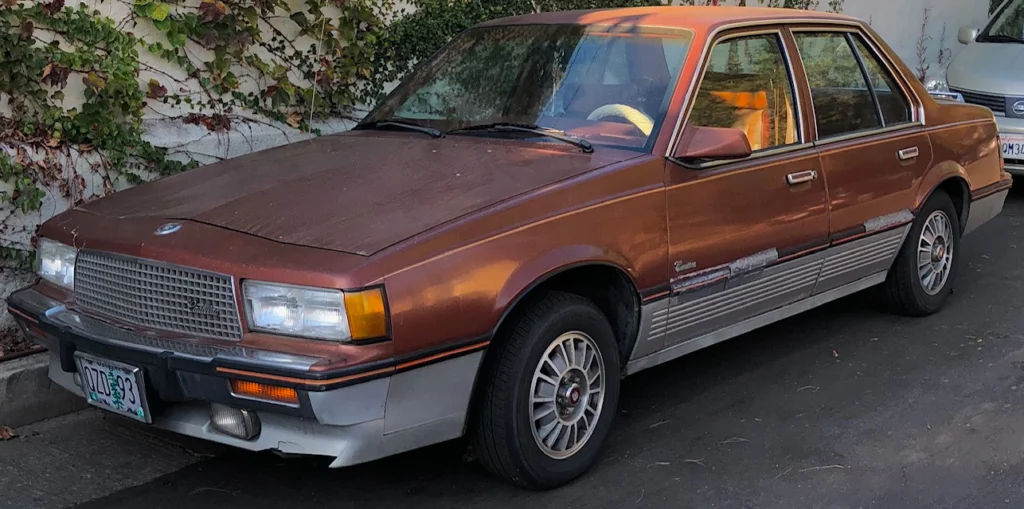
Perhaps no vehicle better exemplifies misguided attempts at coolness than the Cadillac Cimarron, which was essentially a Chevrolet Cavalier wearing a poorly fitted Cadillac costume. In a desperate bid to attract younger buyers and compete with European luxury compacts like the BMW 3-Series, Cadillac slapped their crest on GM’s J-body platform, added leather seats and wood-like trim, then doubled the price. Cadillac’s marketing department had the unenviable task of convincing consumers that this rebadged economy car was actually a sophisticated European-style sport sedan worthy of the Cadillac name.
Advertisements showed the Cimarron parked in front of exclusive clubs and featured young executives impressed by its “international size and handling,” apparently hoping consumers wouldn’t notice that underneath the leather and wood veneer beat the heart of a rental-fleet Cavalier. The Cimarron’s attempt at youthful Euro-inspired coolness was so transparent and cynical that it became a case study in how not to create a luxury vehicle. Even Cadillac executives later admitted the Cimarron was a mistake, with one famously calling it “a car that never should have been built.” The Cimarron remains automotive shorthand for cynical marketing gone wrong—proving that you can put a Cadillac crest on a compact car, but you can’t make consumers believe it’s anything but a compact car with a Cadillac crest.
10. Dodge Charger (1980s version)
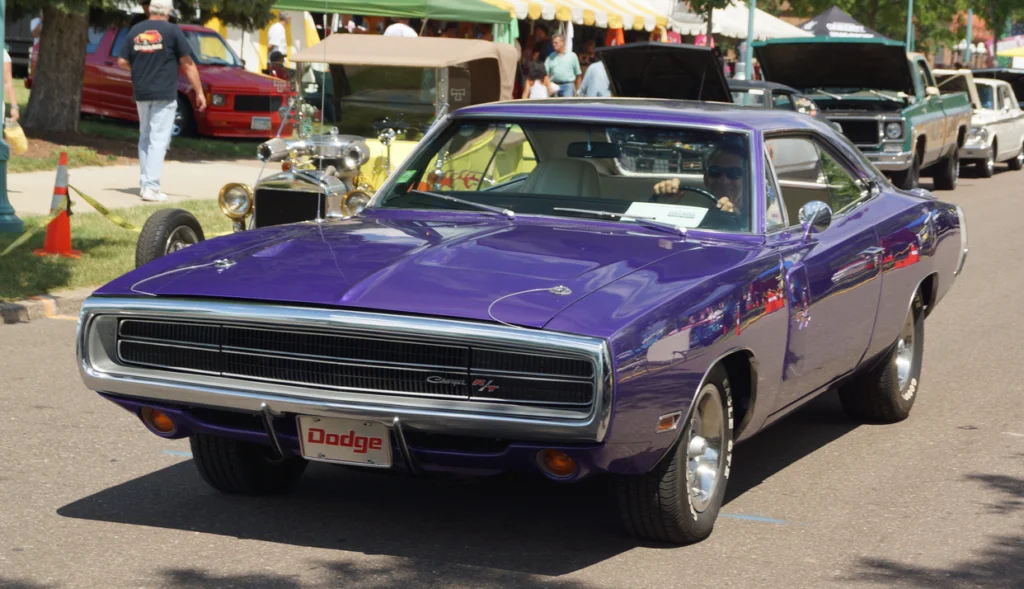
Few names in automotive history carry the performance credibility of “Charger,” which makes Dodge’s decision to apply this storied nameplate to a front-wheel-drive, four-cylinder hatchback in 1983 all the more baffling. After the oil crises of the 1970s, Dodge needed fuel-efficient vehicles but didn’t want to abandon their performance heritage. Their solution? Take the Omni platform, style it to vaguely resemble a sports car, and resurrect the Charger name in hopes that some of its muscle car magic would rub off on this economy-focused hatchback.
Dodge’s marketing for the ’80s Charger was particularly cringe-worthy, with commercials showing the car performing choreographed “performance” maneuvers that amounted to little more than basic turns, while the voiceover promised “the power to change your mind” about American cars. The disconnect between the Charger name’s historical associations with rumbling V8 engines and tire-smoking burnouts and the reality of a car whose base engine produced just 70 horsepower created automotive cognitive dissonance of the highest order. The “Shelby” version did offer more respectable performance, but for most buyers, the front-wheel-drive Charger represented a perfect example of how not even the most legendary nameplate can make an ordinary economy car cool. Dodge eventually came to their senses, retiring this version of the Charger until they could properly resurrect the name in 2006 with a vehicle that actually lived up to its heritage.
The 1980s represented a challenging transition period for automakers trying to balance fuel efficiency mandates with America’s enduring love affair with performance and style. These ten vehicles serve as time capsules of misguided marketing, questionable design decisions, and the fundamental truth that genuine coolness can’t simply be manufactured—especially when your starting point is an economy-focused compact car. While some compact cars of the era successfully captured the zeitgeist (the Volkswagen GTI and Honda CRX come to mind), these ten remind us that sometimes, no amount of spoilers, ground effects, or special badging can transform the fundamentally uncool into something desirable. As we now approach a new era of automotive transformation with electrification, perhaps today’s manufacturers can learn from these examples that authenticity matters more than marketing when trying to create vehicles that truly capture the imagination.


